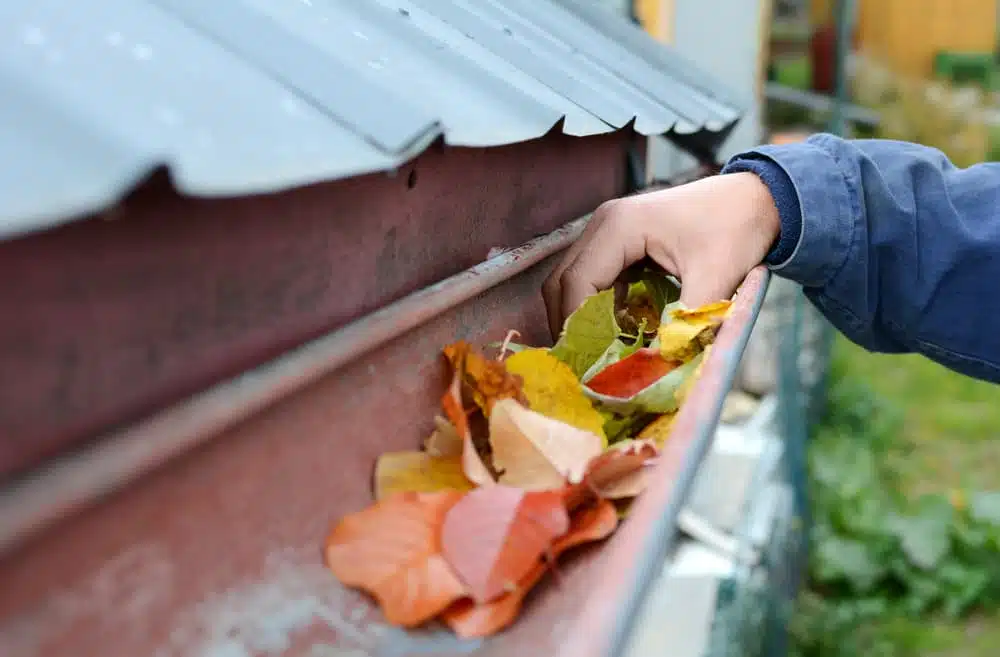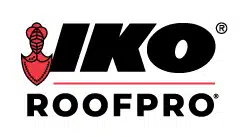
As we transition into the fall season, there are plenty of things you can do to ensure your home is in tip-top shape for the upcoming months and beyond. This season, in particular, is a good time to do some exterior work to avoid potential damage caused by winter, and roof maintenance should be an important part of your outdoor plan. Below are some tips that can guide you as you complete your fall roof maintenance.
Contents
- 1 Reasons to Perform Roof Maintenance in the Fall
- 1.1 1. It Needs Inspection After the Summer Storms
- 1.2 2. The Weather Conditions Are Favourable
- 1.3 3. The Shingles Are Easier to Work With
- 1.4 4. Time to Form a Tight Seal
- 1.5 5. Get it Done While You Can
- 1.6 6. Prevent Ice Dams in the Winter
- 1.7 7. Enhance the Energy Efficiency of Your Home
- 1.8 8. Extend Roof Lifespan
- 2 Fall Roof Maintenance Tasks
- 3 Calling On the Experts
Reasons to Perform Roof Maintenance in the Fall
When it comes to any roof-related work, you know that it’s not a simple task. Just the hassle of getting up there can be enough to deter you from ever glancing at it. But keeping on top of annual maintenance and repairs is essential in order to avoid having any issues emerge down the road. And between the snow, ice, and high winds, wintertime can make it even more susceptible to damage. That’s why now is the best time to have it taken care of.
Here are eight reasons to perform roof maintenance during the fall.
1. It Needs Inspection After the Summer Storms
Even though the spring and summer seasons usually bring plenty of sunshine, they also tend to bring plenty of storms, including high winds and rain. This, combined with the intense heat, can cause damage. That’s why it’s ideal to perform roof maintenance during the fall after those tumultuous seasons have passed.
2. The Weather Conditions Are Favourable
Getting up on the roof can be dangerous at any time of the year. But attempting to get up there during unfavourable or unpredictable weather conditions can make it treacherous. During the fall, you’re far less likely to have to deal with intense heat, or freezing temperatures, in addition to snow and ice.
3. The Shingles Are Easier to Work With
When the temperatures take a serious dip, it makes the shingles on your roof more rigid and difficult to work with. During cold temperatures, they can break more easily when being installed and repaired. And, once they become so brittle, it often means that they have to be nailed by hand instead of using a nail gun, which costs more time and money for you.
4. Time to Form a Tight Seal
When new shingles are installed, they need time to set and form a tight seal against the roof structure. But if there’s weather on the way, this can impact how well they bond to the roof. Without an adequate seal, your home can become susceptible to drafts and water damage inside your home. To ensure your roof has a proper sealing, stick to repairs and maintenance during the fall.
5. Get it Done While You Can
Of course, once the snow, ice, and sub-zero temperatures arrive, there’s little you or a professional contractor can really do until the weather clears up. So if your roof experiences any problems during the winter that catch you off guard, you could be forced to wait it out until the spring.
6. Prevent Ice Dams in the Winter
Fall roof maintenance plays a critical role in preventing the formation of ice dams on your roof during the winter months. Ice dams form when snow melts on the warmer parts of the roof and refreezes in colder areas, typically along the eavestroughs. By ensuring proper insulation, cleaning up the debris, and addressing any other issues during the fall, you can significantly reduce the risk of ice damn formation once the temperatures drop.
7. Enhance the Energy Efficiency of Your Home
A well-maintained roof not only protects your home from winds and precipitation but it plays a key role in the energy efficiency of your home. Especially during the winter months, a properly sealed and insulated roof will keep the inside of your home warmer, thus reducing the overall energy bills.
8. Extend Roof Lifespan
Yearly roof inspections and repairs during the fall can help you identify and address any roof-related issues early, preventing them from turning into more significant problems down the road. As a result, your roof will serve you better and longer.
Fall Roof Maintenance Tasks
The changing leaves are the perfect indication that it’s time to start gearing up for winter by doing some regular inspections and tasks to ensure that your roof is in good shape to take on the weather ahead. To get your roof prepped, here are some tasks you shouldn’t forget to include on your to-do list this season.
1. Check Your Attic
Your attic will give you a good indication of any weak spots along the surface of the roof and certain problem areas that might require attention. Look for any watermarks that will source points of entry for water and areas of potential wood rot. Also, checking the air vents is important during this time of year to avoid any moisture accumulation along the ceiling throughout the snowy winter.
2. Get an Inspection
Many homeowners are under the assumption that if they don’t notice a blatant issue on their roof, there’s no need for an inspection. What can be problematic about this assumption is that it’s hard to thoroughly examine a roof because of its height, and there could be an issue in one of the roof’s nooks and crannies that isn’t visible from the ground. Only an experienced roofing professional can identify these subtle issues in a proper inspection and prevent them from becoming a much larger problem later on.
Have Your Roof Inspected
Inspecting the roof should include assessing any damage along the shingles, looking out for any rot, and identifying any areas that could allow snow and ice to seep in and cause structural damage. Your roof is an important and expensive component of your home that needs to be in good shape, so it’s always recommended to opt for a proper, thorough professional inspection.
Inspect Your Fireplace and Chimney
If you have a fireplace, it should be cleaned before you light it up during the winter to ensure that the smoke can be easily and safely expelled out through the chimney. The chimney flashings on the rooftop should also be inspected to ensure they are properly sealed.
Evaluate Skylights and Roof Vents
While the inspector is on the roof, ask them to evaluate the condition of your skylights and roof vents. Any signs of damage, leaks, or deterioration should be addressed immediately, as properly functioning roof vents and skylights will ensure that your roof effectively keeps cold temperatures and precipitation out during the winter.
Check for Pest Infestations
Your roof inspector should also check your roof and attic for signs of pest infestations. Birds, rodents, and insects can build nests or damage roofing shingles, which could lead to structural damage and water infiltration. Identifying and addressing pest infestations in a timely manner can help to prevent further damage and ensure that your roof can withstand the upcoming winter months.
3. Check and Clean Exterior Lighting
While the inspector is reviewing your roof, don’t forget to check your home’s exterior lighting. Take a look at all outdoor lights, especially those mounted on the roof or near gutters. If you identify any signs of broken fixtures, loose connections, or burnt-out bulbs, take time to make repairs or replacements. Even if no evident problems are identified, don’t overlook the importance of cleaning the exterior lighting, as it can significantly improve visibility around your home during the darker fall and winter months.
4. Clean Gutters and Trim Trees
Pay attention to your gutters while you’re analyzing the condition of the roof. The gutters are one of the most important areas to address before the winter weather arrives. Cleaning out the leaves and other debris from the fall is crucial for keeping your roof and your home free from water damage. So once the neighbouring trees surrounding your home have dropped the majority of their foliage, make sure to have the gutters and the downspout cleaned out.
5. Invest in Repairs
If you or a roofing contractor happen to find any broken, missing, or damaged shingles, you should prioritize getting them repaired. Neglecting your roof will only lead to more severe and costly repairs down the road. Also, the last thing you want is a damaged roof during the snowy winter months. The snow, ice, and wind will likely do more damage to your roof which could have been otherwise avoided if it had been repaired sooner.
Calling On the Experts
It is well worth it to get your roof repairs done early in the fall so you can rest easy in the winter, knowing your home is protected from damage against the elements. When you need professional assistance with roof repairs or replacing your roof entirely, trust our experts at Roofmaster. Contact us today to learn more about our services and how we can help you with your roofing needs.









